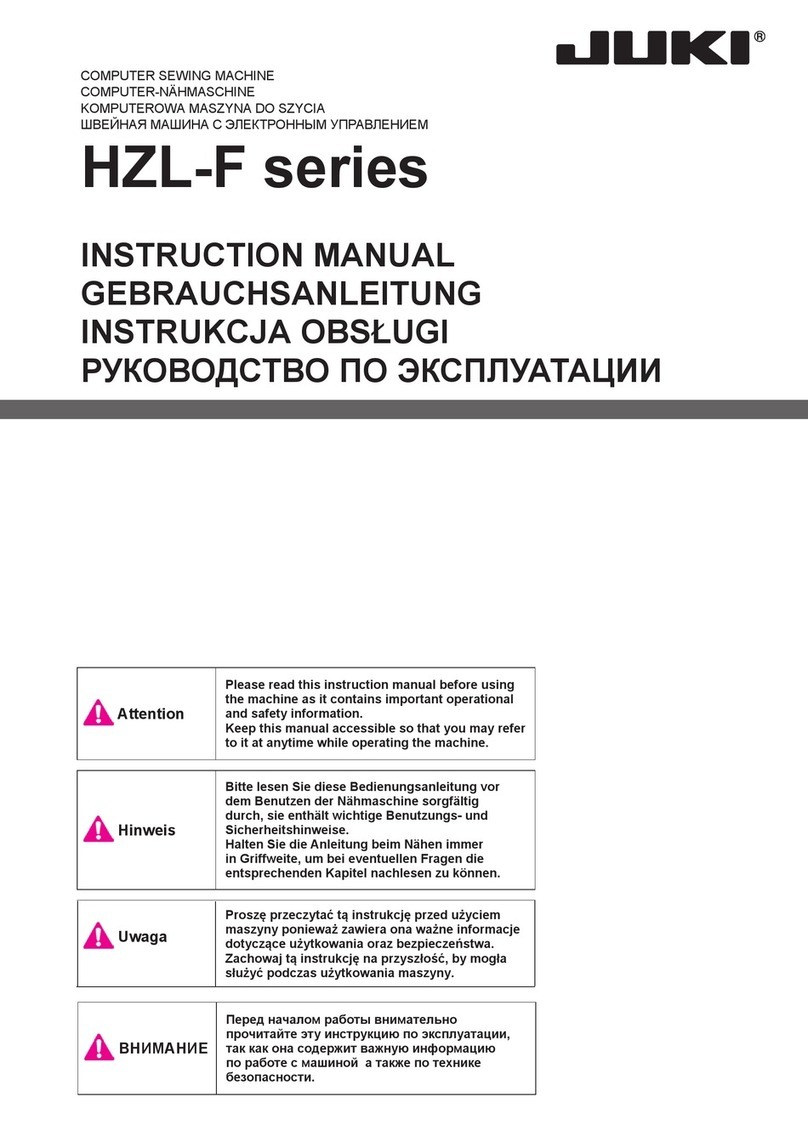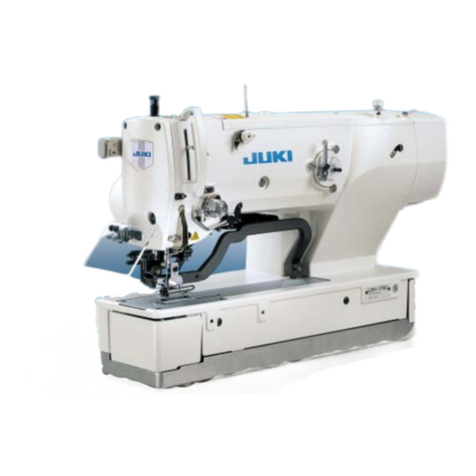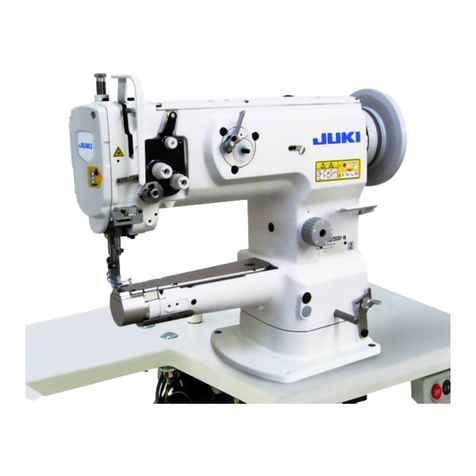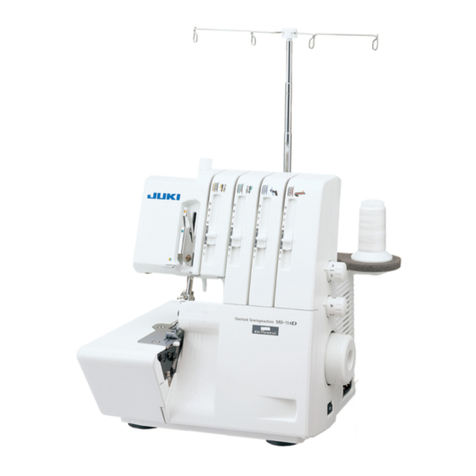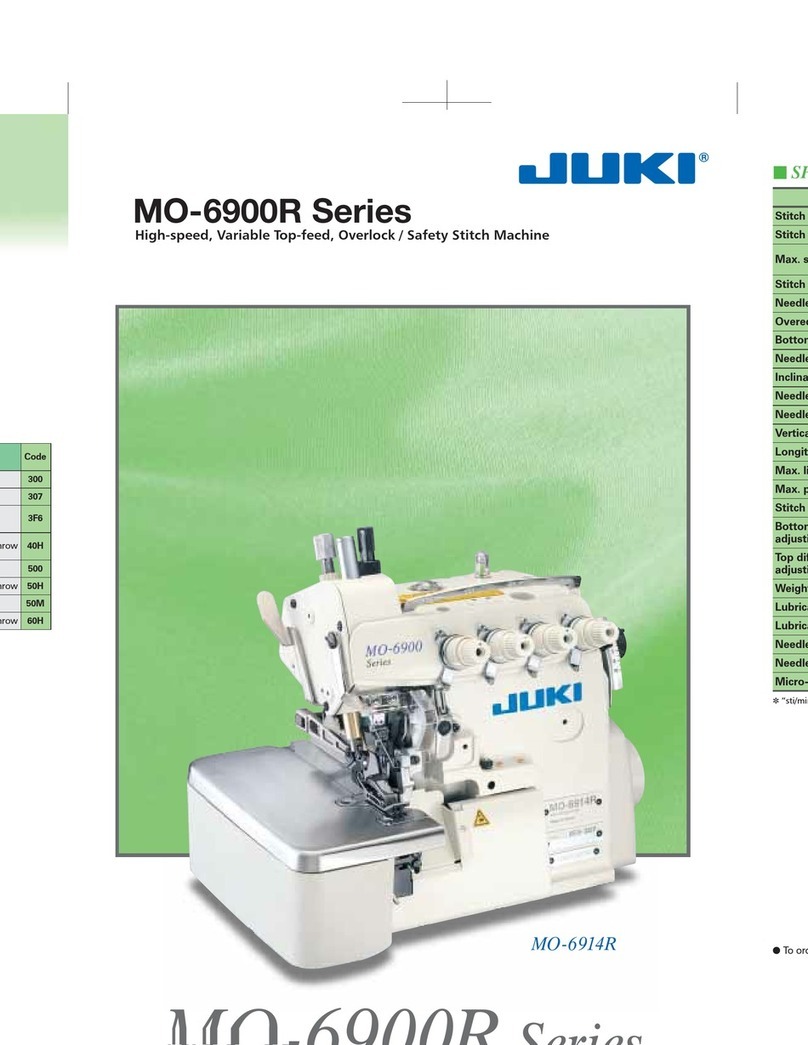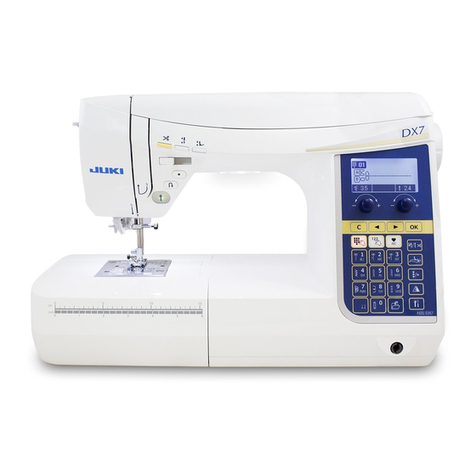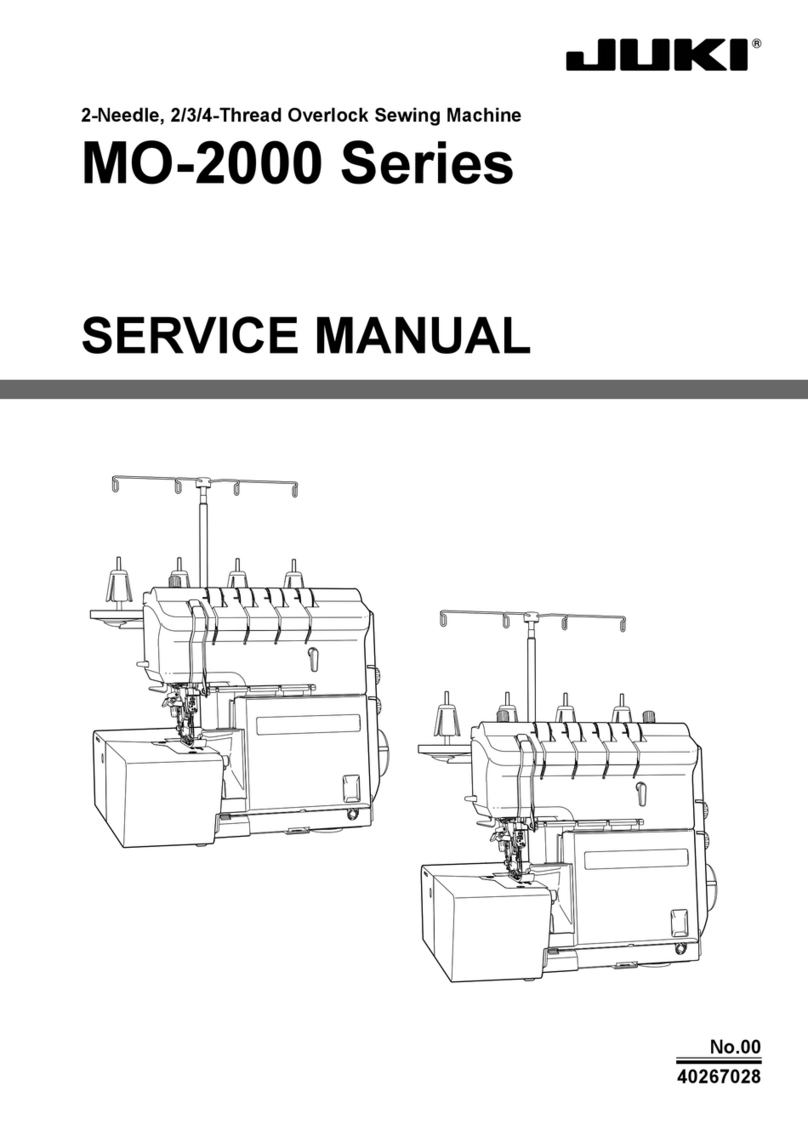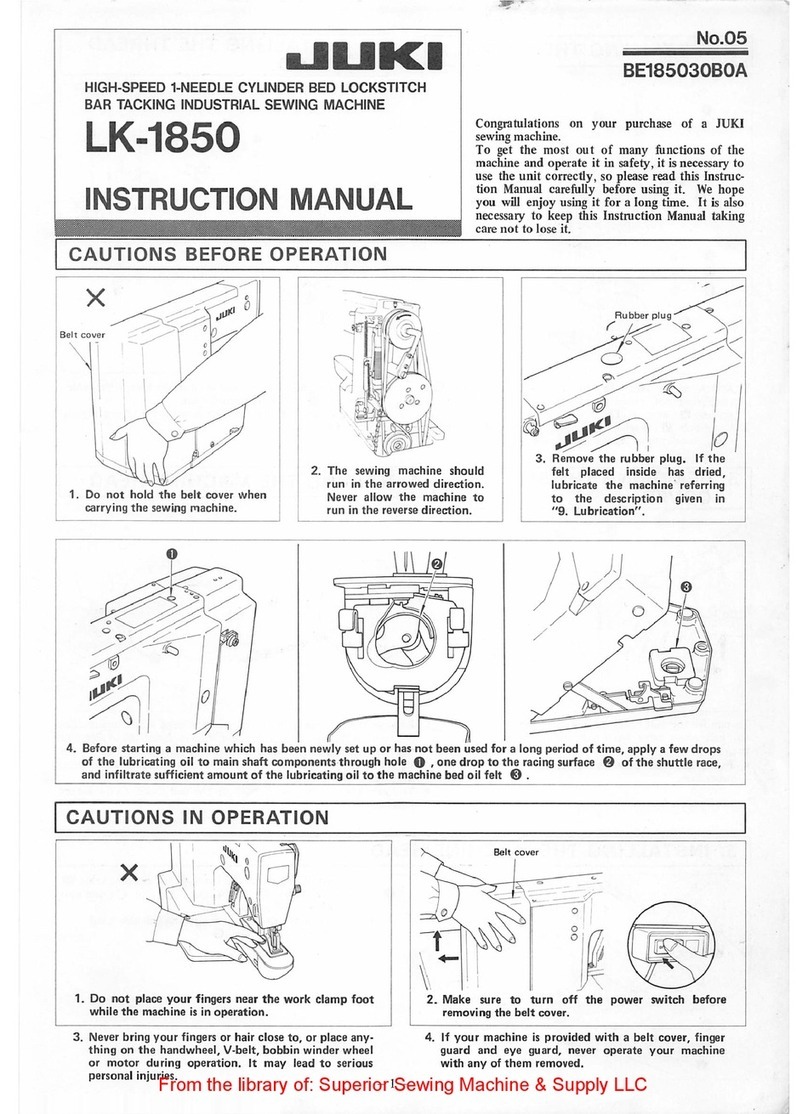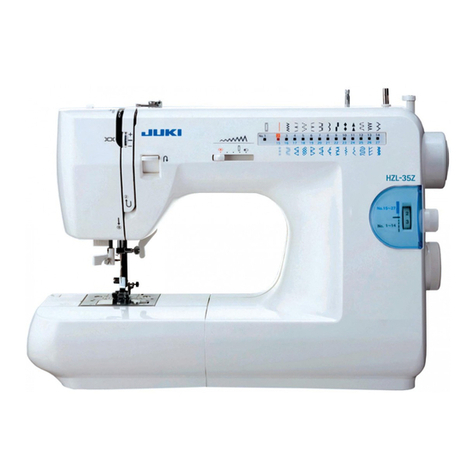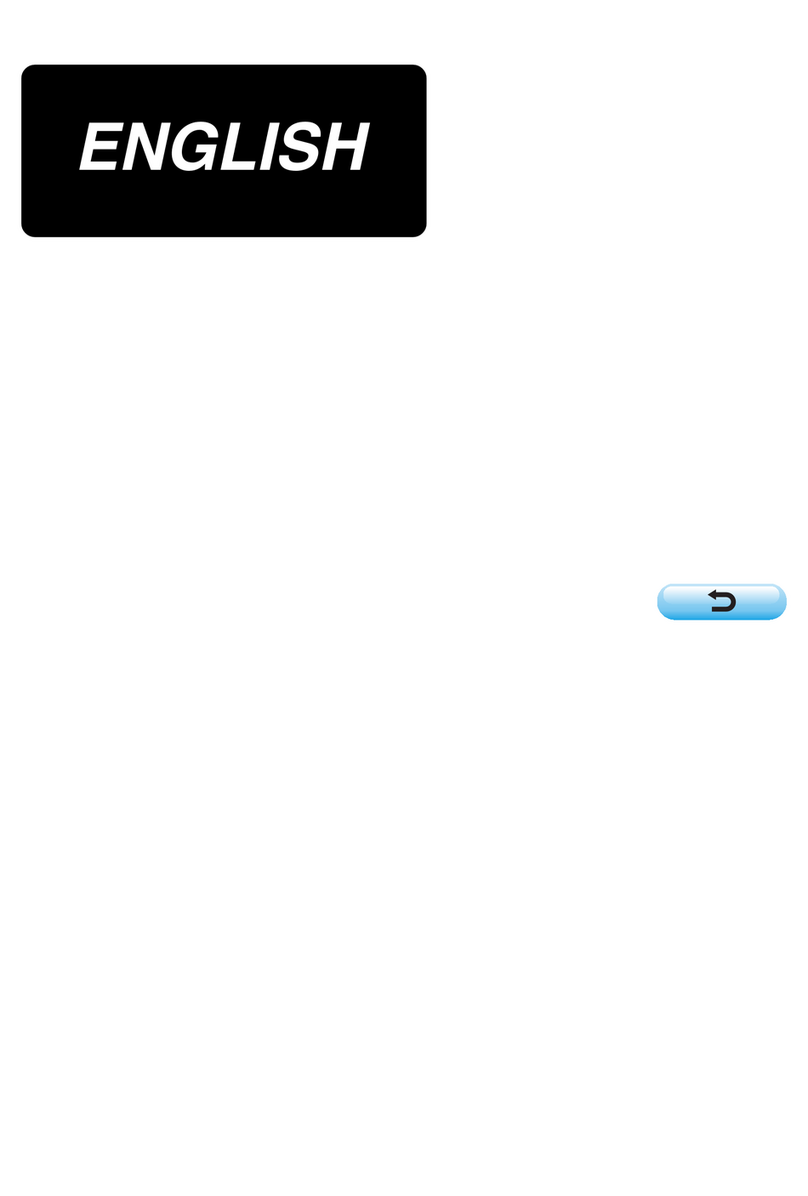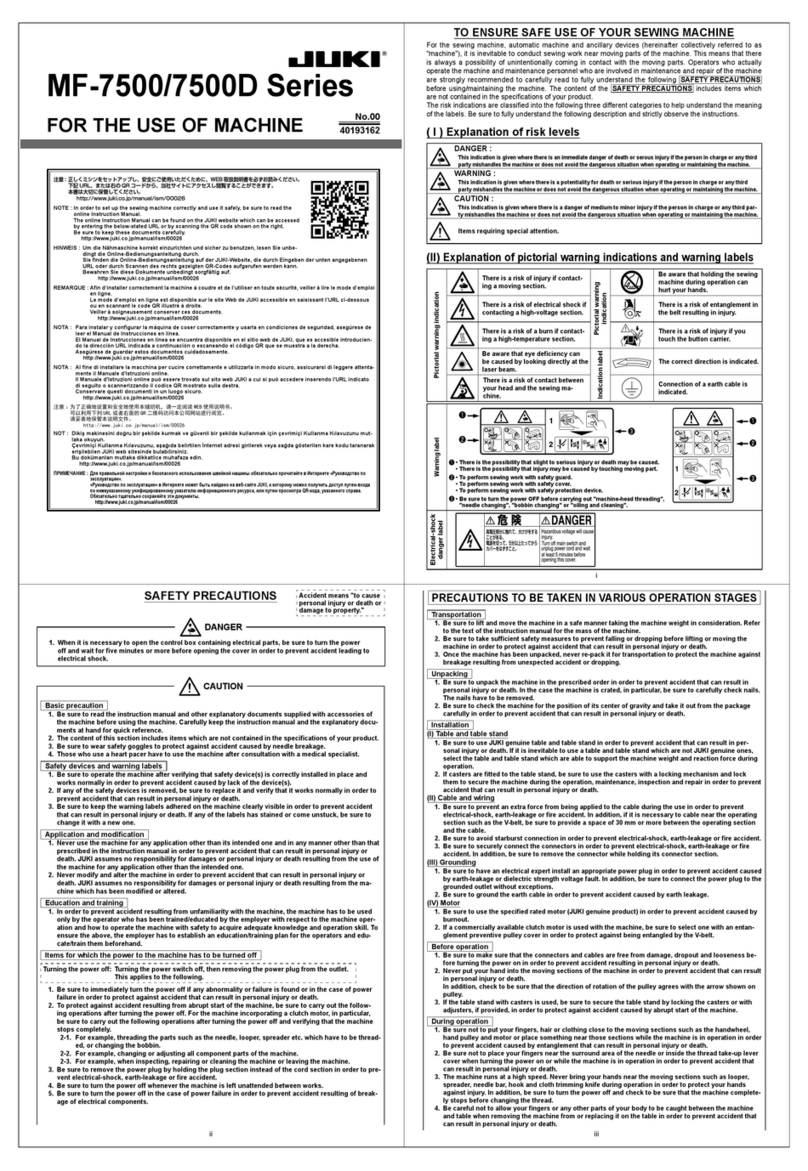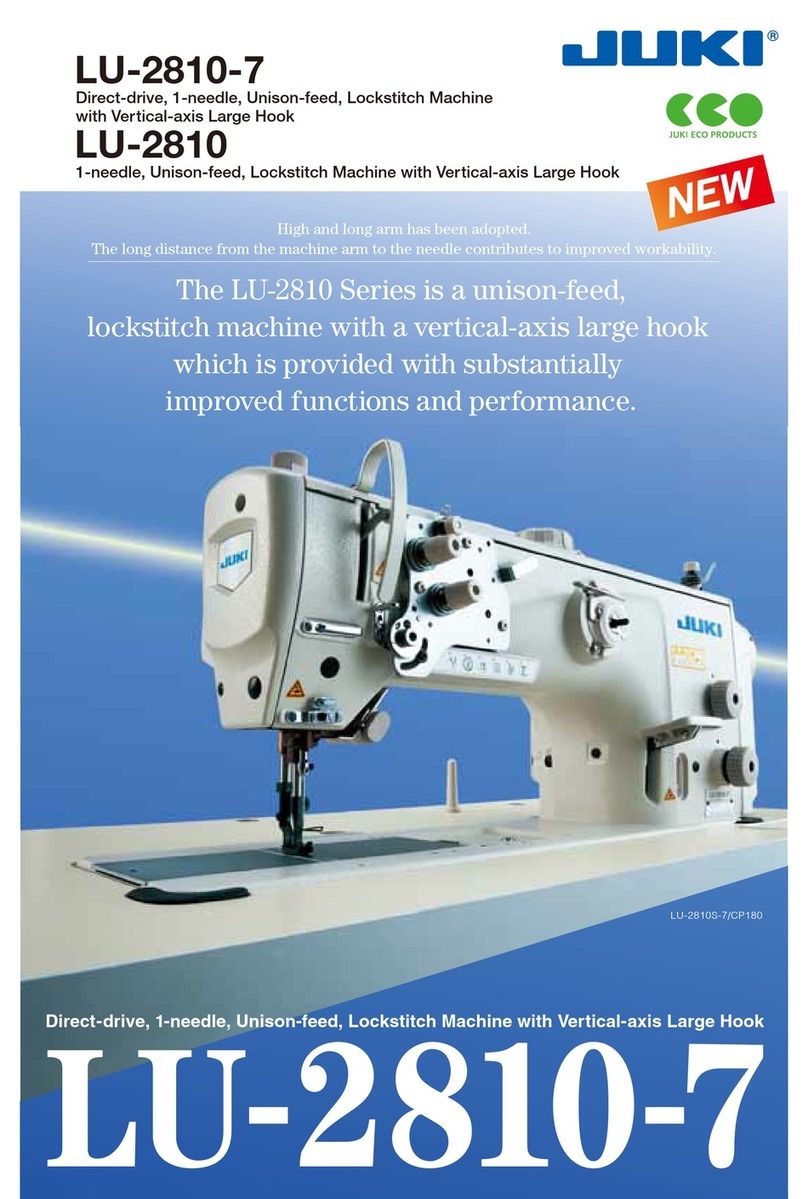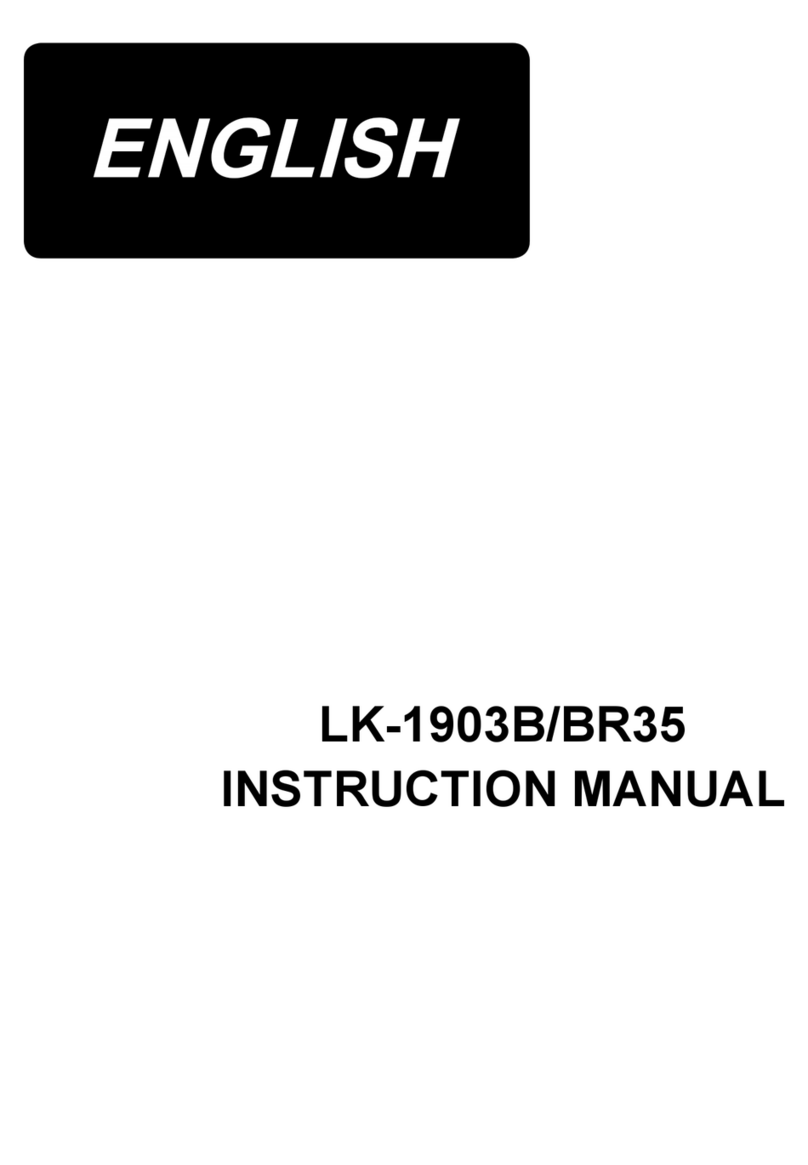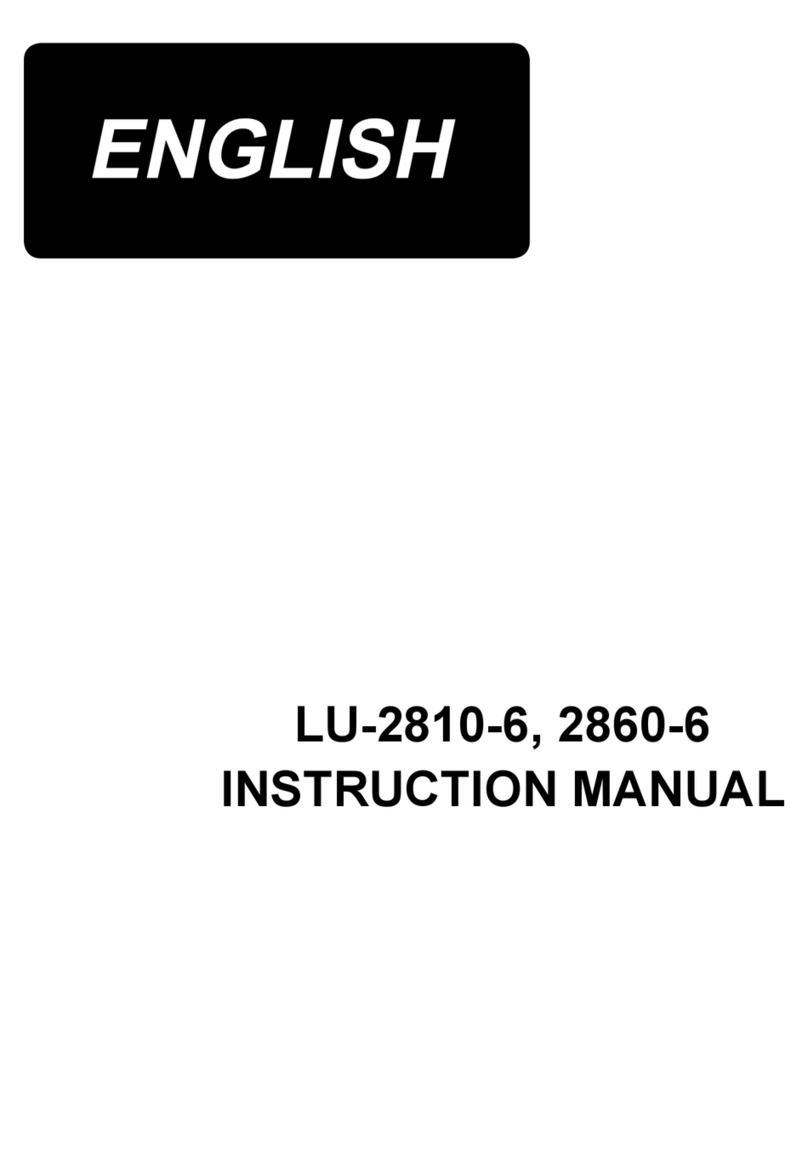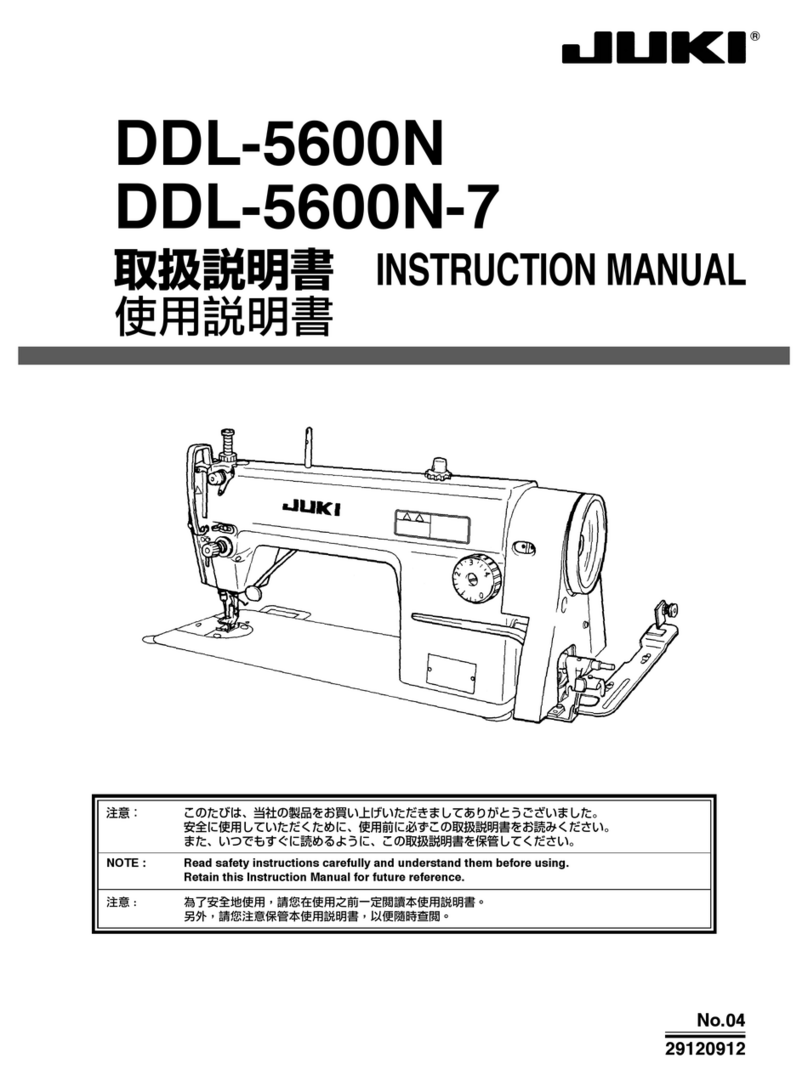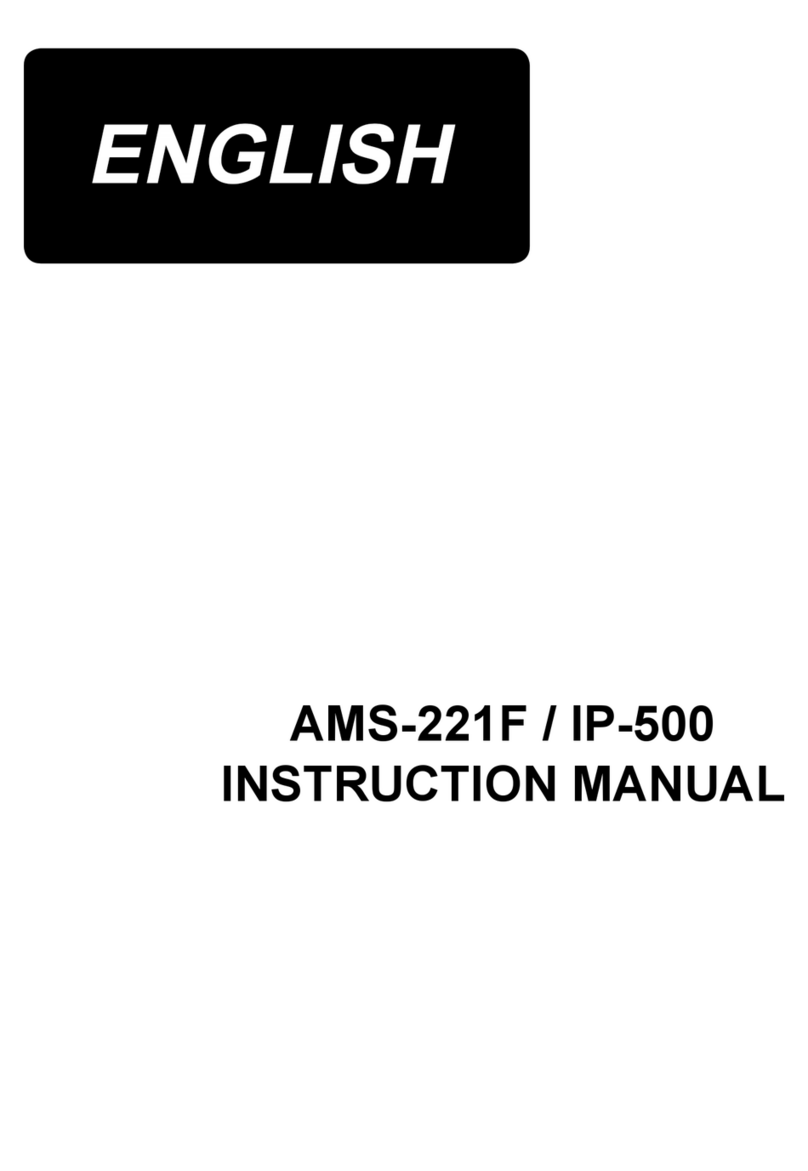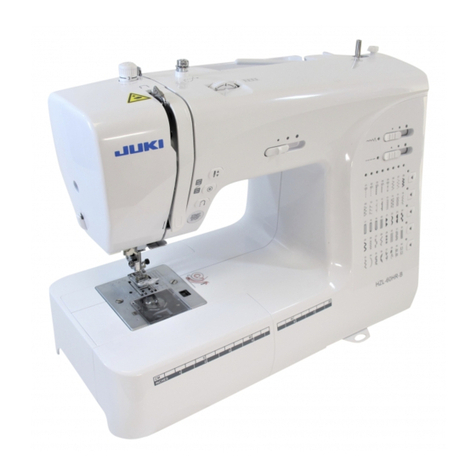
Safety instructions ········································1-3
Contents························································4
Details of the machine···································5-6
• Accessories·················································6
Preparing the machine / Using the machine ·······7-8
• Attaching the foot control································7
• Waste collector ············································7
• Thread stand ···············································8
• Placing the spool holder for the chain thread ······8
• Thread / cones / spools··································9
Using the machine
• Power/light switch·········································9
• Raising the upper knife ··································9
• Two step presser foot lifter with integrated front
foot lift······················································10
• Changing the presser foot ···························· 10
• Looper cover ············································· 11
• Cloth plate ················································ 11
• Handwheel················································ 11
• Inserting the needles ··································· 12
Needle and thread·········································13
Adjustments and settings
• Stitch length ··············································14
• Cutting width ·············································14
• Dierential feed·········································· 15
• Gathering··················································16
• Upper looper converter ································ 16
• Roll hemming ············································17
Settings, practical sewing
• Presser foot pressure ·································· 17
• Sewing in tape ··········································· 18
• Thread breakage during sewing····················· 18
• Unpicking seams ········································18
Threading preparations / tips ···························19
Stitch chart·············································· 20-21
Threading 4/3 Thread OL
• Upper looper ·············································22
• Lower looper ·············································23
• Right-hand needle ······································24
• Left-hand needle ········································25
Threading, Chain stitch and OL ··················· 26-28
Contents
Trial sewing, thread tension ·····························29
Thread tension ········································ 29-30
Cover/chain stitch functions·····························31
Cover/chain stitch functions and
general operating instructions ····················· 32-33
Threading 4 thread cover stitch
• Threading cover stitch looper ························34
• Cover stitch R needle ·································· 35
• Cover stitch C needle ·································· 36
• Cover stitch L needle··································· 37
Threading 3 thread cover stitch (wide) ···············38
Threading 3 thread cover stitch (narrow) ············39
Threading chain stitch ····································40
Sewing test and tension adjustment ··················41
Tension adjustments ······································42
Practical Sewing-Cover stitch
• Securing the seam end, cover stitch ···············43
• Unpicking seams ········································43
• Stitch plate with seam guide lines ·················· 43
• Simple hem ···············································44
• Flat joining seam ········································ 44
• Edges with elastic······································· 45
• Binding·····················································45
Top stitching seams /ribbing/yokes····················46
Practical Sewing-Chain stitch
• Gathering with chain stitch···························· 46
• Binding·····················································46
Maintenance
• Changing the upper knife ····························· 47
• Changing the lower knife······························ 47
• Cleaning and lubricating······························· 47
Trouble shooting guide ···································48
Technical data ··············································49
Optional Accessories ·····································50
4
